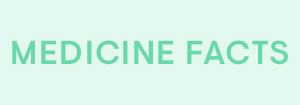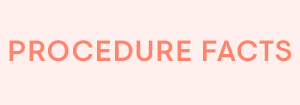OVERVIEW
Teething also called teething syndrome, is a process in babies where the tooth grows through the gum.
Babies are born with a complete set of teeth embedded underneath the gum. During teething, babies’ teeth cut through the gum to emerge in the mouth. Another name for this is odontiasis.
Most babies begin teething by three months. By three years, they have a complete set of temporary (milk) teeth. Some babies do not present with teething symptoms. Others with symptoms show varying signs ranging from drooling to reduced appetite for solid food.
Fever, in the past, was wrongly associated with teething. Though there is a slight increase in temperature during teething, it does not qualify as a fever. Any baby that develops a fever should be taken to the hospital immediately.
KEY POINTS
- Teething is a natural process in which babies’ teeth go through the gum to the mouth.
- Fever and diarrhoea are not symptoms of teething. If a baby develops fever or diarrhoea, the baby should see a doctor.
- The pain associated with teething syndrome is relieved by using infant acetaminophen.
SYMPTOMS
Babies do not present with the same teething symptoms. Some babies show no symptoms, while others show little to mild.
Teething symptoms usually show up four days before babies’ teeth burst through the gum. It resolves three days after the teeth.
Symptoms that could present in teething are:
- Increased drooling
- Baby becomes more irritable
- Increased biting of nipples while sucking
- Wanting to chew objects
- Swelling and tenderness of the gum
- Decreased appetite
- Rubbing the ears
- Altered feeding and sleeping pattern
However, teething does not cause diarrhoea. If a baby has diarrhoea, it is because of a possible infection.
Teething can be very painful and disturbing in some babies. Some things can relieve babies from teething pain. These include:
- Use your clean finger to massage the gums gently. You can also allow the baby to gnaw on your finger. Massaging the gums will ease the pain and give the baby a playful feeling.
- Use a clean cloth to wipe the baby’s face to remove drool from the mouth. Dabbing the mouth will keep the skin dry and prevent infections from developing.
- Keeping the baby’s gums cool will reduce the discomfort. Cold spoons or chilled teething rings keep the gums cool. Parents or guardians must not freeze the teething rings because frozen teething rings can injure the baby’s gum. If the baby is older than six months, the baby can sip cool water.
- A doctor might prescribe some baby pain relief medication like acetaminophen to ease the baby’s discomfort.
IN WHAT ORDER DO TEETH APPEAR?
The process of teething usually proceeds through a particular pattern.
- The two bottom front teeth are the first set to burst through the gum after 5 to 7 months. This set of teeth is also called the bottom central incisors.
- The front upper teeth appear four to eight weeks after the emergence of the central incisors. This set of teeth is the top central incisors.
- The top lateral incisors (the teeth on either side of the top central incisors) burst through the gum around the ninth to twelfth month.
- The bottom lateral incisors (the teeth on either side of the bottom central incisors) cut through the gum a month after the upper lateral incisors.
- The first molars (the teeth for grinding food) emerge after some days.
- After a while, the canines (the teeth in front of the first molars) appear next.
- Finally, the back molars cut through the gum to complete the teething order at around 20 to 30 months.
Most children have complete baby teeth after three years of age. It might take longer in others, and it is not a cause for worry.
Few babies have one or two teeth at birth, while some grow a tooth in the first month. The matured tooth/teeth are not a cause for worry if it is not interfering with the regular feeding of the baby. But if it is interfering with feeding or poses a possible risk of choking, there will be a need to remove it.
DIAGNOSIS
The way to diagnose teething is by looking out for teething symptoms. A parent can observe the baby for the onset of symptoms.
If there are any excessive symptoms, the parent should consult a doctor to assess the baby properly.
CAUSES
Teething is a natural process that occurs with growth. Babies need to undergo the process to be able to chew solid food.
All babies have teeth underneath the gum at birth. At a certain age, usually around the 3rd month, the body senses that it is time for the teeth to cut through the gum.
It is as the teeth emerge from the gum that causes the presentation of symptoms.
PREVENTION
Since teething is a natural process, it has no preventive measures. The critical thing to do is to ensure that the baby has good oral health before teething starts.
Using a clean damp cloth to wipe the baby’s gum will help the oral hygiene and teething when it starts. Parents can also use an infant-sized toothbrush and water as well. They must not use toothpaste. It is strictly a baby-sized toothbrush and water.
The babies should have their gums cleaned every day. This gum cleaning will prevent any tooth infections when teething starts.
TYPICAL TREATMENTS
Certain prescribed medications can help relieve a baby’s pain and other symptoms during teething.
- The doctor can prescribe infant acetaminophen to relieve pain and discomfort.
- Some persons may use teething gels for the baby. Teething gels may or may not have any effect since they wash off easily from the gum during eating and drinking.
There are some other medications that one must not give a baby.
- Avoid teething gels that contain benzocaine or choline salicylate, as they are toxic to babies.
- Never give a baby aspirin in any form.
- Do not use alcohol to touch or rub the gum of a baby.
- Do not use teething necklaces, ankles or bracelets because they can strangle and choke the child.
- Avoid putting frozen objects on the gum because it harms the baby’s gum.
CONCLUSION
Teething is the emergence of babies’ teeth from underneath the gum. It is a normal process that is associated with growth.
Parents should not get worried when their babies exhibit teething symptoms. They should observe the baby to ensure signs are not excessive or abnormal, in which case they should see a doctor.
MOST COMMON







